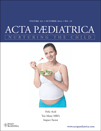Nocturnal enuresis in children in Kinshasa, Democratic Republic of Congo
Abstract
Aim: To determine the prevalence of nocturnal enuresis in children of Kinshasa in Democratic Republic of Congo.
Methods: In all, 506 questionnaires were sent to parents of children aged 6–12 years randomly selected from four primary schools in Kinshasa, Democratic Republic of Congo. The questionnaire was designed to collect information about prevalence and factors associated with nocturnal enuresis.
Results: A total of 415 (82.0%) were correctly completed. In this series, 109 children were identified as nocturnal enuresis in which 50 boys and 56 girls (p > 0.05). Factors associated with nocturnal enuresis were deep sleep, young age and familial history of enuresis (p < 0.05). Only 11% of patients have been consulted by doctors. Twelve children (11.0%) were treated by healers traditional. In the other part, 43 children (39.4%) were frequently punished by their parents. The common self-help strategies were 79 children (72.5%) were submitted to fluid restrictions before going to sleep and 68 (62.4%) were waking the child at night to void.
Conclusion: In Kinshasa, the prevalence of nocturnal enuresis was high to those reported in Asian and Western countries. Nocturnal enuresis remains an important clinical problem in children but only a small percentage of parents seek medical help.




